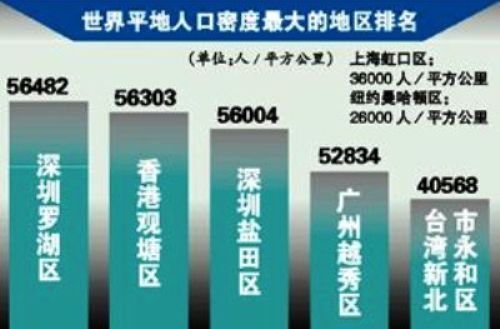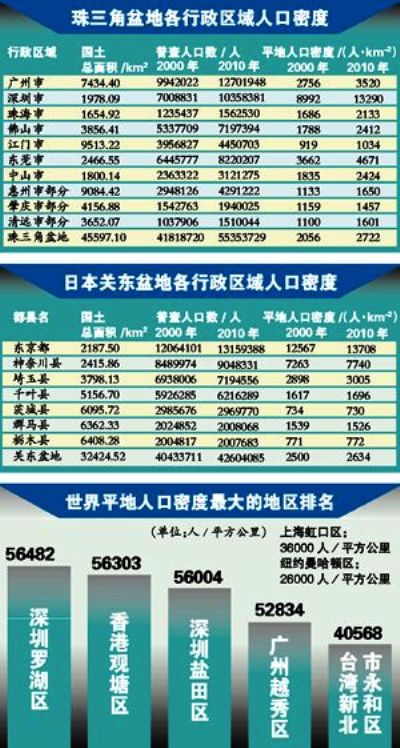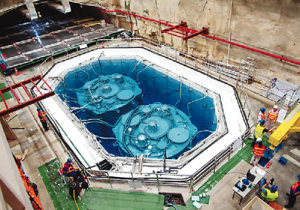When Push Comes to Shove: Luohu, Shenzhen is World’s Most Crowded Place
Posted: 05/9/2014 6:14 pm We’re not sure what to make out of this report, but clearly the numbers don’t lie: the Pearl River Delta has some of the most densely populated urban centers on the entire planet.
We’re not sure what to make out of this report, but clearly the numbers don’t lie: the Pearl River Delta has some of the most densely populated urban centers on the entire planet.
People’s Online Daily reports that Guangzhou geochemistry studies researcher at the Chinese Academy of Science Kuang Yaoqiu is a very worried man. Kuang sees the ability of the Pearl River Delta to continually attract people as a “glass half empty, half full” situation.
It’s always nice to make new friends as more and more expats leave the smoggy cities of the north for the south, but Kuang is especially concerned about Pearl River Delta cities reaching their breaking point in terms of resources.
Kuang says that the total population of the combined cities of Guangzhou, Foshan, Shenzhen, and Dongguan make up 70 percent of the entire population of the PRD. As such, the population density has already reached a point, seemingly, of no return. Kuang said:
“Overpopulation is pushing cities to the verge of their limits: backed up traffic, environmental pollution, deficient educational resources, and overcrowding are all putting the city into misalignment.”
And so, Kuang has unveiled some statistics based upon the 2010 census. Here they are:
The first two graphs compare population and population density of PRD cities with those of Japan with censuses from 2010 and 2000. And then, as seen on the third graph, we have these startling revelations:
- The area with the highest population density in the world is Shenzhen’s Luohu District at 56,482 people per square kilometer.
- The second ranked most dense are by population is Hong Kong’s Guantang district at 56,303 people per square kilometer.
- Next is – again – the city of Shenzhen, whose Yantian District has a population density at 56,004 people per square kilometer.
- The fourth highest population density in the world is Yuexiu District of Guangzhou with 52,834 people per square kilometer.
- And then it’s Taiwan’s Xinbei city, in which the Yonghe District has a population density of 40,568 people per square kilometer.
For comparison, Shanghai’s Hongkou District is ranked at having a population density of 36,000 people per square kilometer, while New York City’s Manhattan is listed as only having 26,000 people per square kilometer.
Sounds all very renao; at any given moment, it sounds like a party/fight can break out. We had to triple check it, but yes, that chart does in fact say “Cities Ranked by Population Density Worldwide” and does not just represent those for “China”.
But while these numbers sound incredible, the hype is a little more manageable when taken as a city. The average population density of the Pearl River Delta is 2,722 people per square km. When taken as an entire city, the total average population density for Shenzhen is 13,290 people per square km.
Before you start to complain about the waidiren coming into our neighborhoods and stealing our jobs, it bears mentioning that no city of the Pearl River Delta made it into a list of the 50 most dense international cities by population, the one exception being Macau which has a population density of 19,796 people per square kilometer, and is ranked at number 36.
By contrast, the world’s highest ranked city in terms of population density is Manilla, Philippines. There, the population density is 42,857 people per square kilometer in which they manage to squeeze 1.6 million residents into only 38.5 square kilometers. Now, that’s renao—for sure there’s a hotpot and karaoke going on at all times in that place.
Yes, it appears that you can skew numbers around to fit whatever argument you have, especially one that is with good intentions. But, it’s never about the numbers.
Numbers don’t lie; they just add up.
Photo: People’s Daily Online, iFeng












